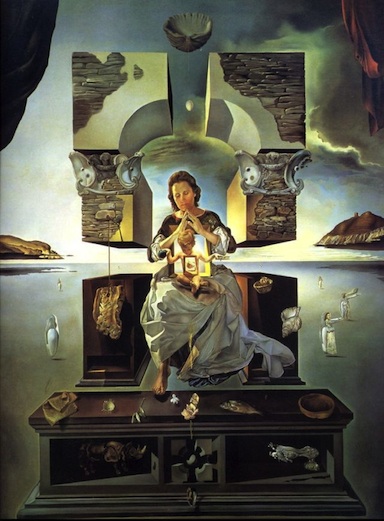This weekend, I decided to try my luck and head to the final display of the three-part “Winter Museum of LOVE” joint exhibition. The first display was great, but I found the second display abysmal. Would this last display prove the joint exhibition to be an overall success?
This final love themed exhibition titled いにしえの恋バナ (Inishie no Koibana, “Love Story in Ancient Times”) is currently on display at The Fukuoka Art Museum. Of the three exhibits in the overall Winter of LOVE joint exhibition, this one is the smallest: it encompasses just one room of artifacts. There are individual poems, scrolls with illustrated short stories, kimono, and byoubu (屏風, painted folding screens with multiple panels) included in the display. Though it only takes up one room, the content of the exhibit is varied and quite interesting yet sticks to the overall theme, and thanks to the intricacy of the paintings, drawings, and embroidery of the pieces you may find it easy to spend far more time here than you would have expected.
If you do not know any Japanese, you might be disappointed to find that the love poems and stories included in this exhibit do not include any translations: only the work titles, the names of their authors/artists (if known), and creation dates/eras are included in English. Some of the byoubu information placards contain a little extra background information about what their illustrations represent, but that’s about it.
Thankfully, the visual beauty of the illustrations requires no understanding of Japanese to appreciate; though a basic knowledge of Japanese art styles, history/court hierarchy, and/or important literary works—in this case especially the Tale of Genji— would of course be beneficial in understanding certain scenes depicted in some of the paintings. Whatever your linguistic or cultural knowledge, be sure to give each piece more than just a passing glance, or you easily will miss the finer details of the work: the fluid nature of the long hair of the women in the tiny ink illustrations accompanying a soliloquy, the Juzu (prayer beads) hidden beneath the sleeve of a nobleman on one byoubu, or on another screen cranes silhouetted in gold and brown near a full moon that are so delicately painted that they might be mistaken for autumn leaves or a stylized transition between clouds and sky if given only a cursory glance.
If you can read Japanese, you will be pleased to find that standardized transcriptions of the stylized calligraphy in the poems and stories have been included for legibility, and more obscure Kanji include furigana to make them easier to decipher. (This is important because not only has the writing and pronunciation of Kanji characters changed over time, but— just like signatures in English— hand-written calligraphy can be difficult to read or completely illegible even to native speakers).
The last items in the display are two hand-embroidered kimono. I found it oddly adorable that since they represent the married life that comes at the end of a successful (and hopefully joyful) courtship, they were labeled in Japanese as the exhibition’s “Happy Ending.”
So, was the Winter Museum of LOVE an overall success? I say yes. The first part of the exhibition was varied, intriguing, and overall extremely enjoyable— even though a lot of the included pieces and subject matter were a bit of a stretch for the “love” theme. The second part was a disappointing mishmash whose inclusion decidedly detracted from the quality of the joint exhibition as a whole. However, this third display fit the theme of love and was interesting and (if you’ll forgive the unintentional pun) lovely. So, I give the overall display a pass.

That having been said, let’s get back to The Fukuoka Art Museum. Your entry fee for Love Story in Ancient Times not only gains you access to that exhibition, but also to two other one-room temporary exhibits currently on display in the Ancient Art section of the first floor, AND the upstairs gallery!
The two adjacent temporary exhibits you can view are 涅槃図公開 (Nehanzu Koukai “The Nirvana Figure Exhibit”)— a collection of carved guardian statues from a tomb surrounding a central buddha and an image of Buddha’s followers mourning his achievement of nirvana— and 伝•源実朝筆/日課観音図をめぐって (“An Examination of Minamoto no Sanatomo’s Daily Paintings of Kannon“). My favorite part of these two exhibitions were the guardian statues for each direction of the Chinese Zodiac in the Nirvana exhibition. Before you read their captions, look at their helmets and see if you can guess which direction/animal they represent.
The upstairs gallery includes works from around the world spanning the last 200 years or so. From modern Japanese artists to impressionist and cubist painters to Warhol and Dali, there is a lot to see among various movements, styles, artists from a diverse array of countries and backgrounds. Don’t forget to visit the free galleries on this floor as well!! In total, with your ticket should give you access to seven rooms of exhibitions across two floors (the three temporary exhibits on the first floor, three galleries on the upper floor, and the large main gallery on the second floor). If you time it right and are interested in calligraphy, there is also a city-wide shodou exhibition going on in the three rooms of the public galleries right now as well that you can stop by on the second floor. You should definitely take some time out of your day to head over to the Fukuoka Art Museum before you miss out, there is a lot to see!
“Love Stories from Ancient Times” (as well as the two adjacent temporary exhibits) will be on display through Sunday, April 12th. Photography is not permitted.
Love Story in Ancient Times 「いにしえの恋バナ」
Exhibition End Date: Sunday, April 12th, 2015
Admission Price: ¥200 for Adults, ¥150 for Students, free for children
Location: The Fukuoka Art Museum
- 1-6 Ohori-Koen Park, Chuo-ku, Fukuoka-shi 810-0051
Hours: 9:30 AM to 5:30 PM (last admissions at 5 PM)
- Closed Mondays
